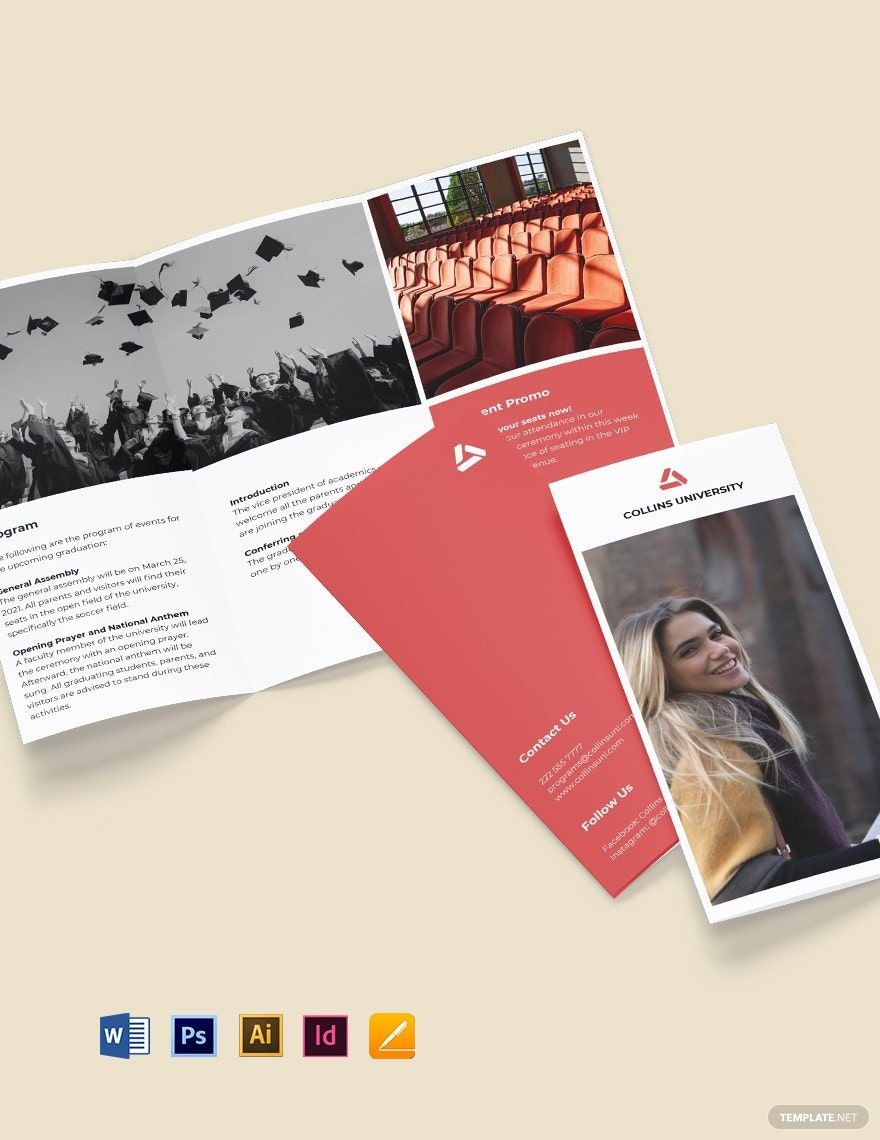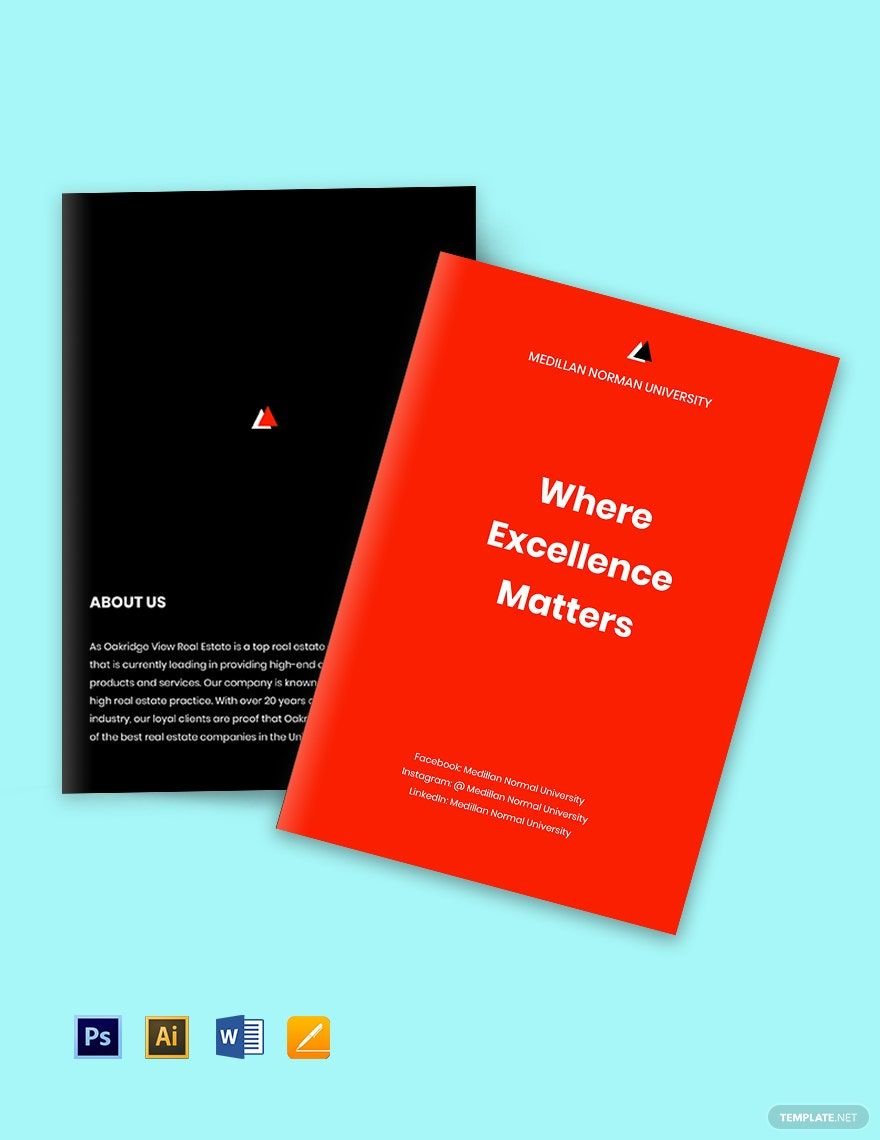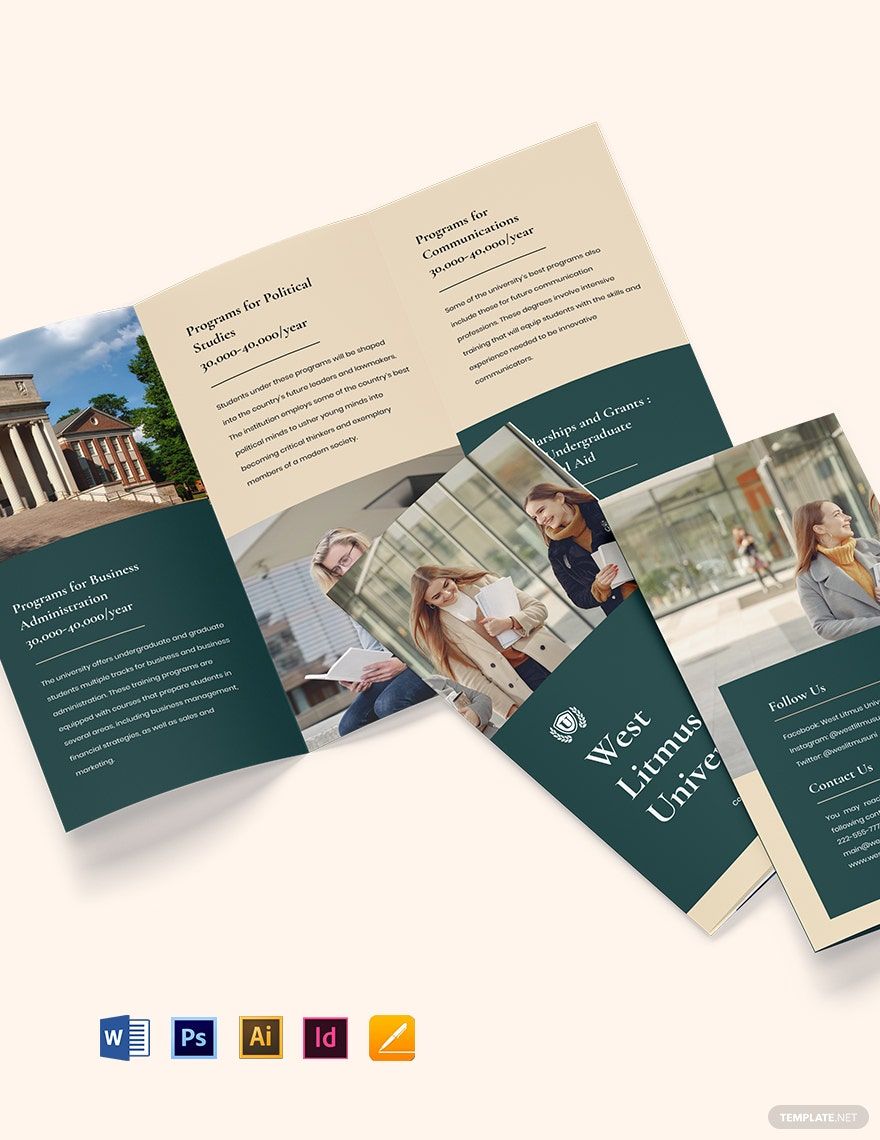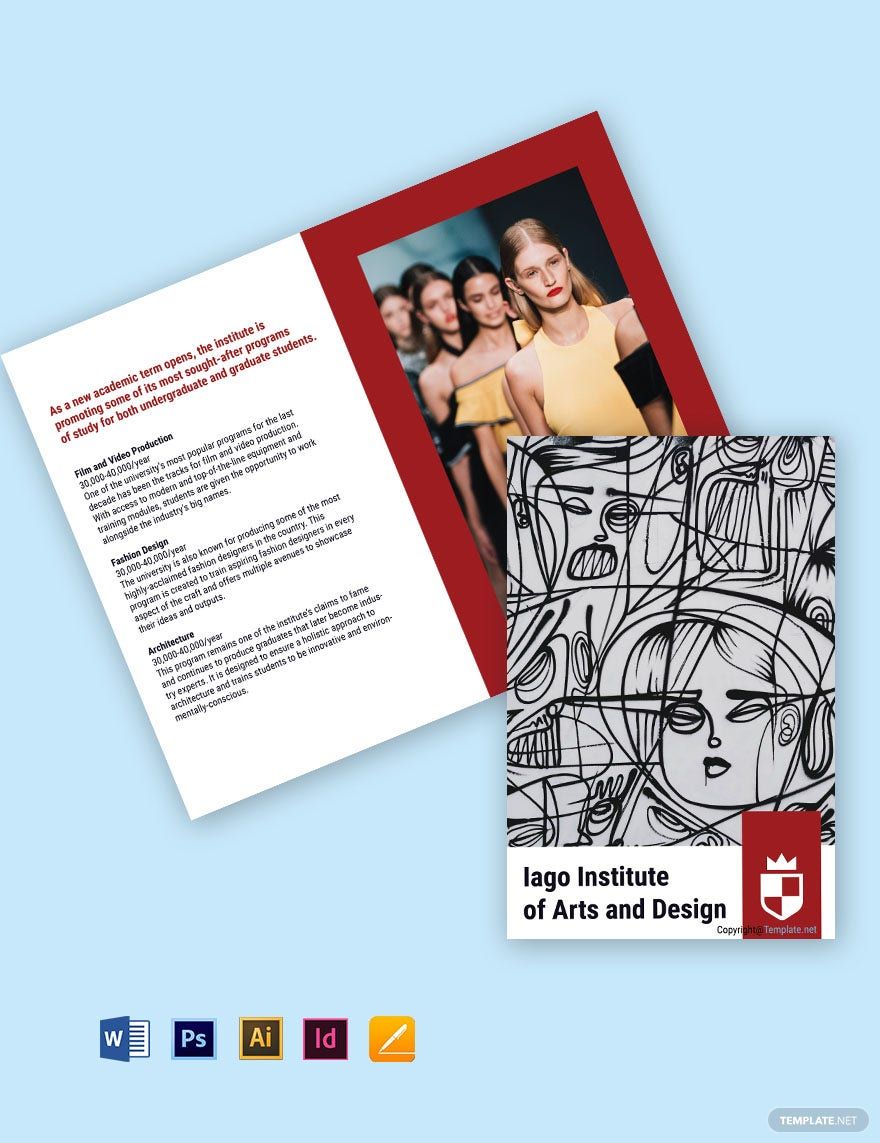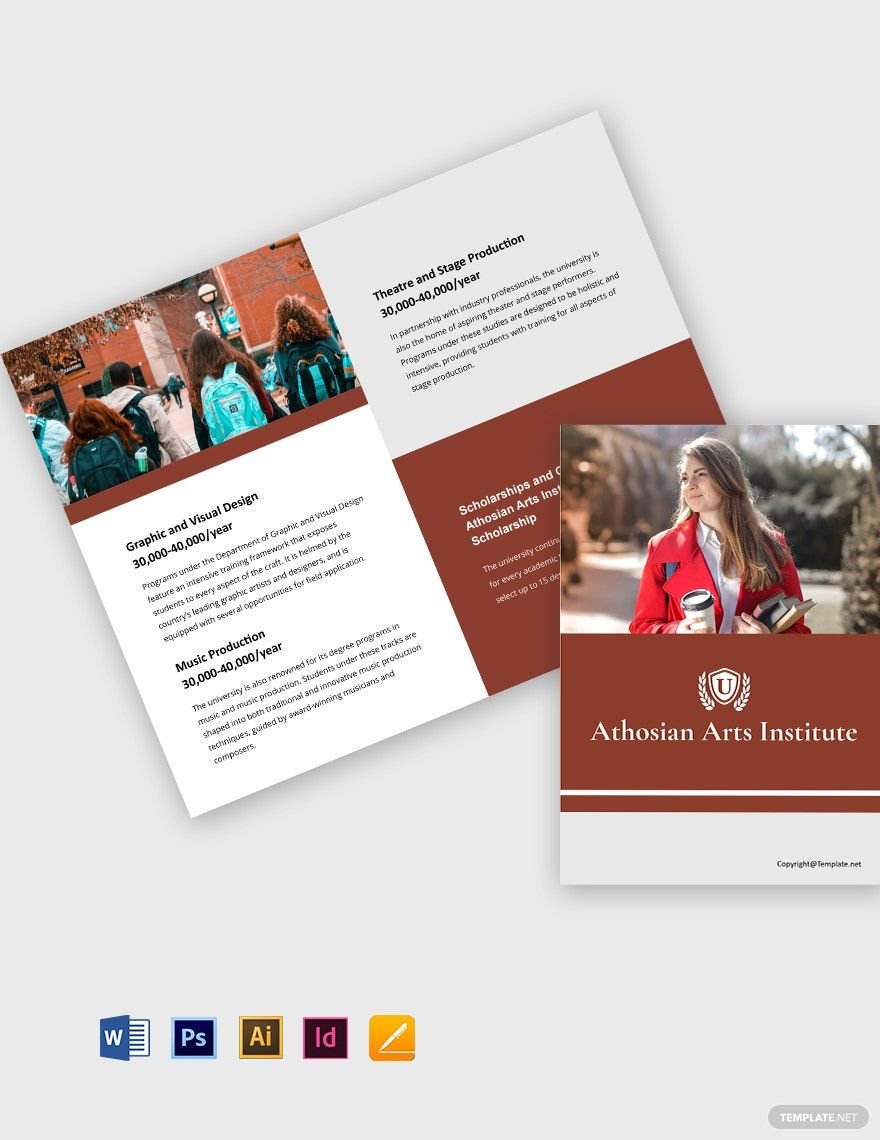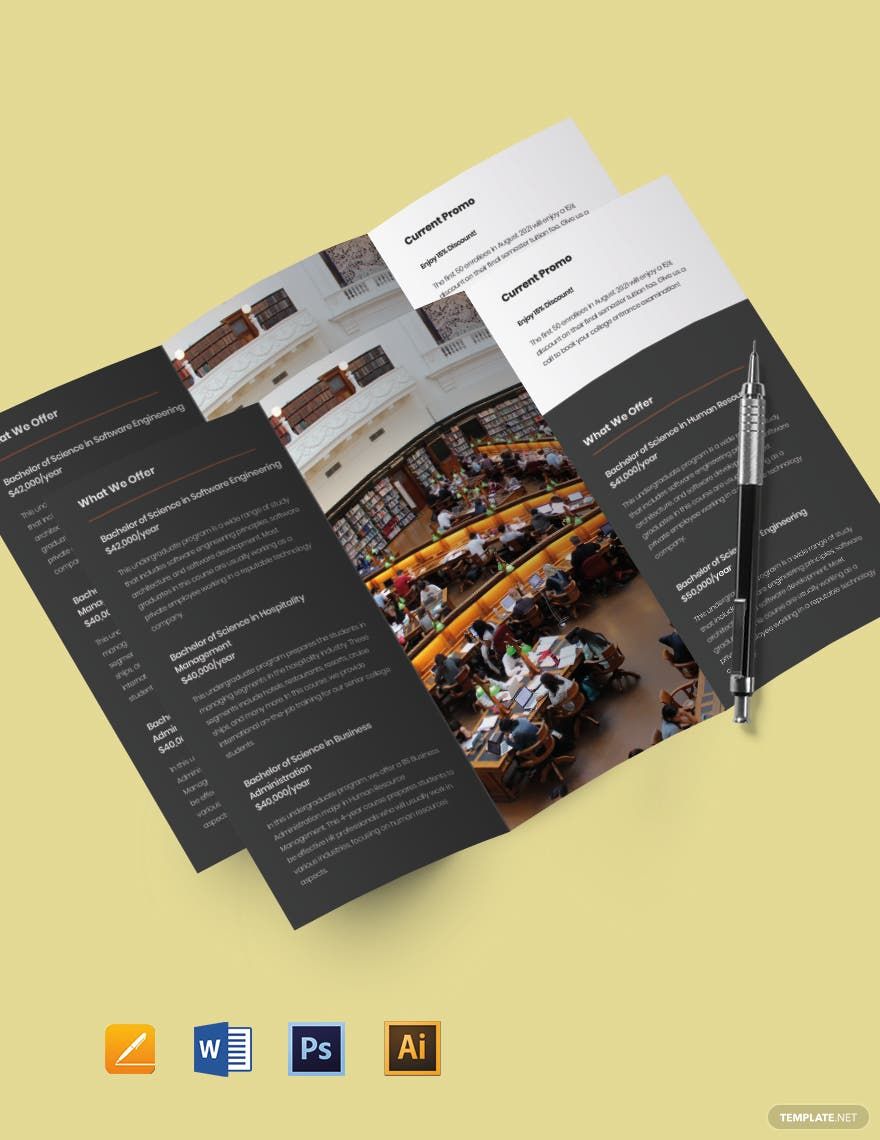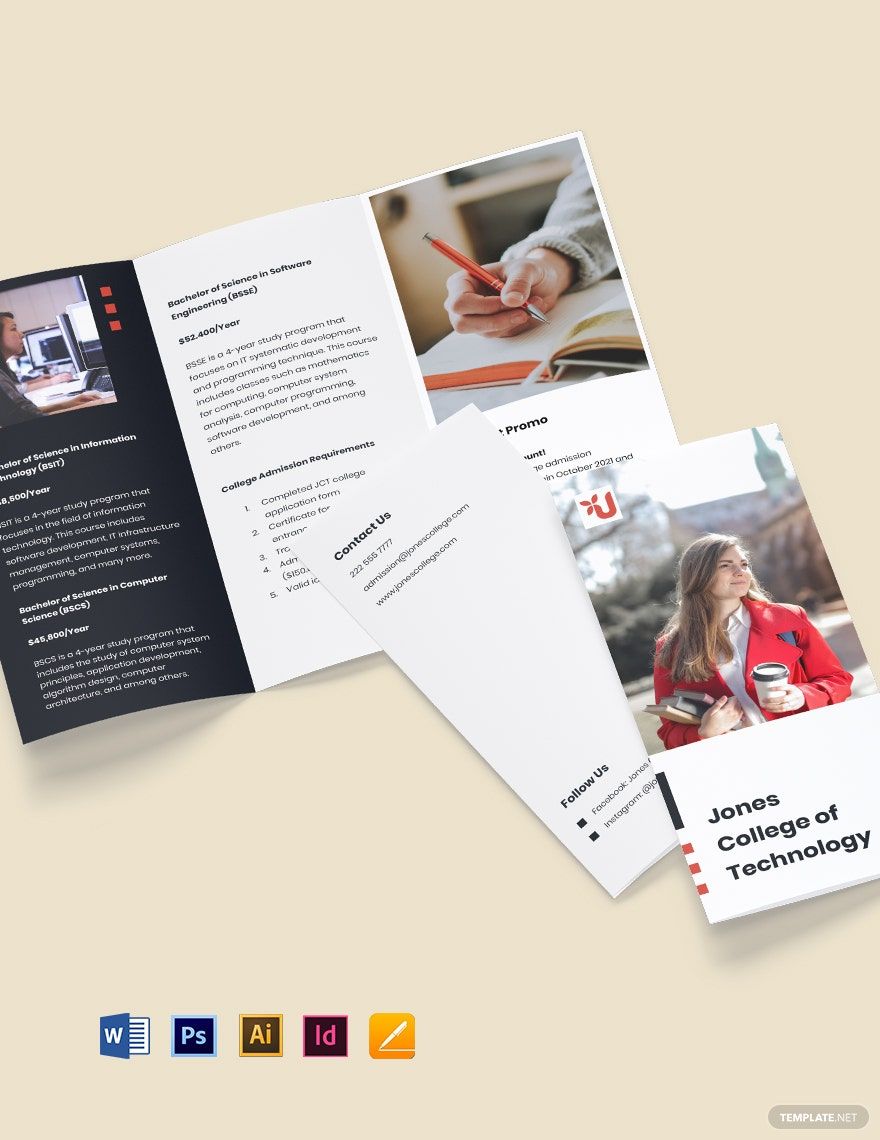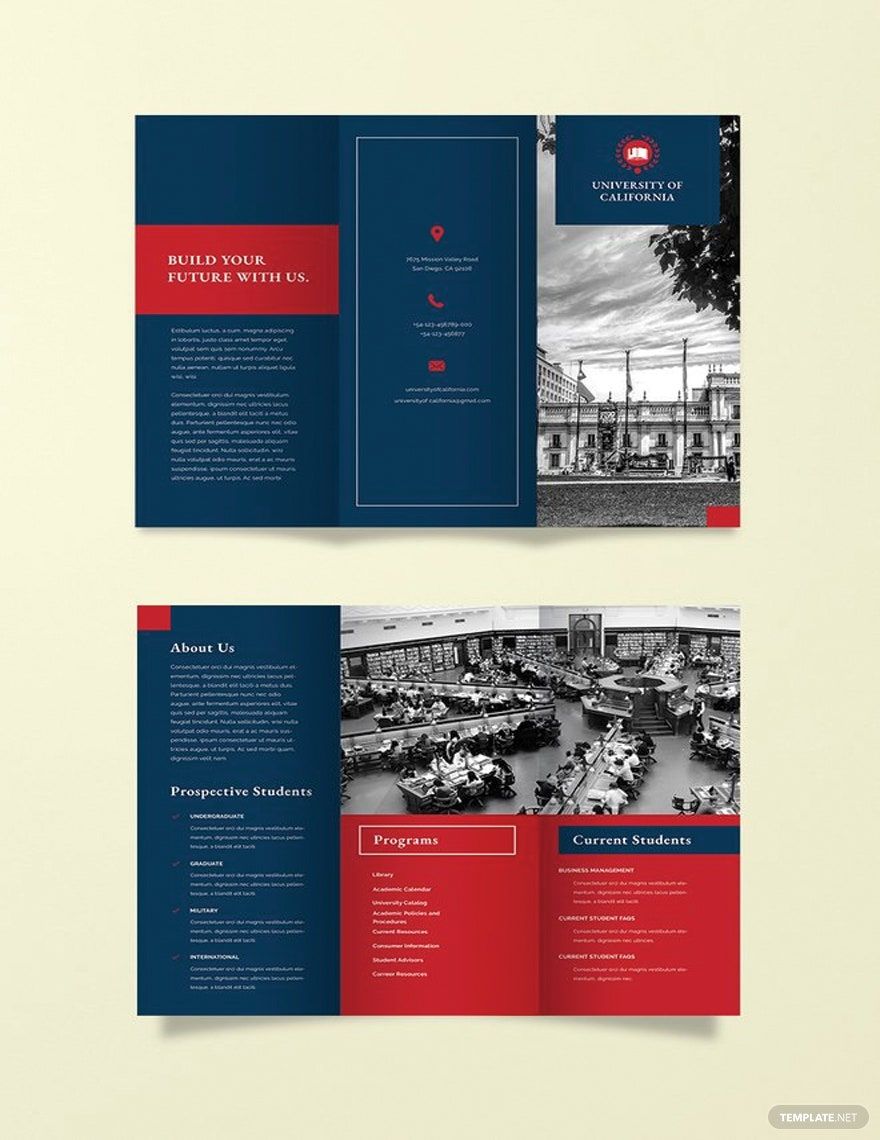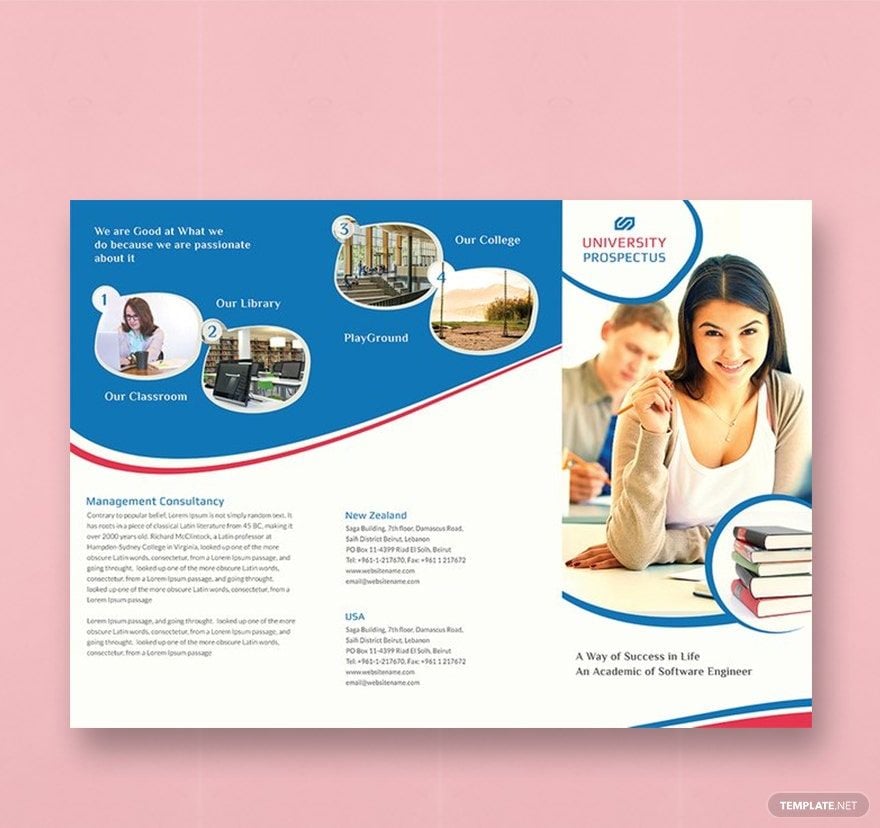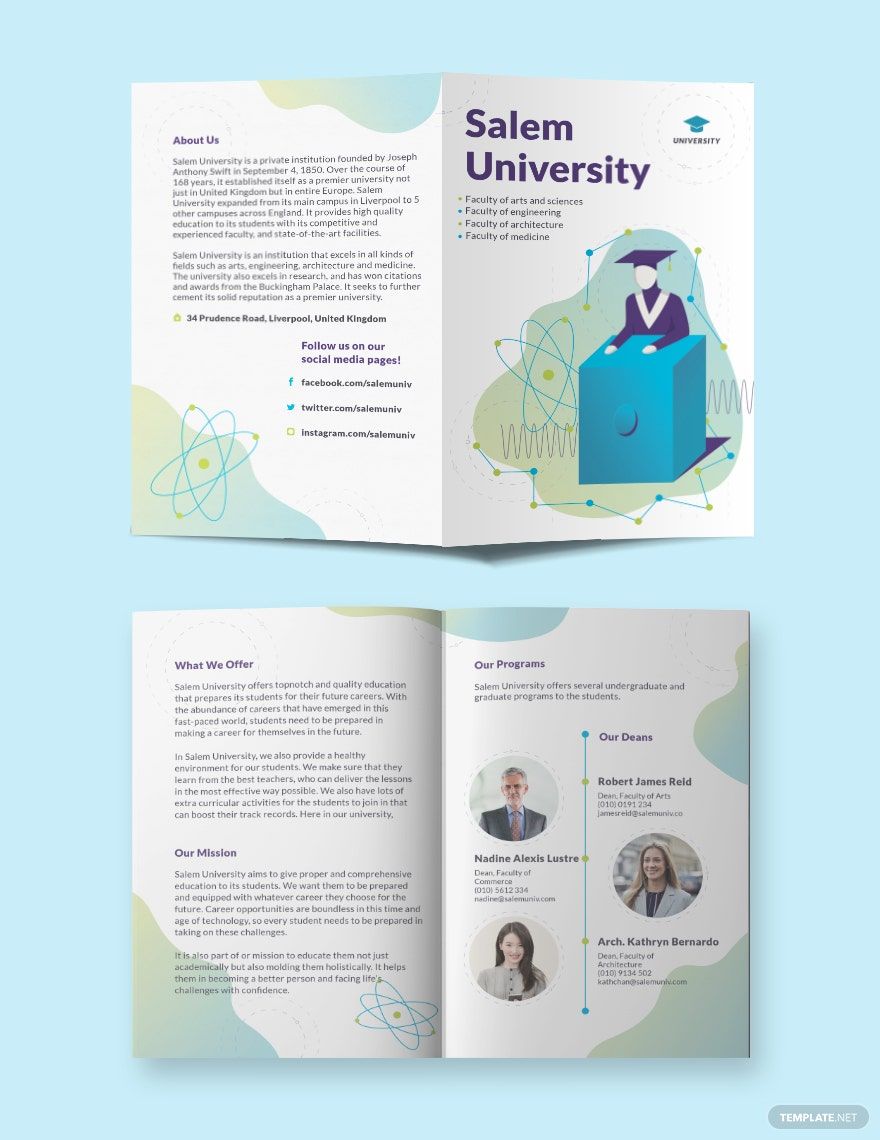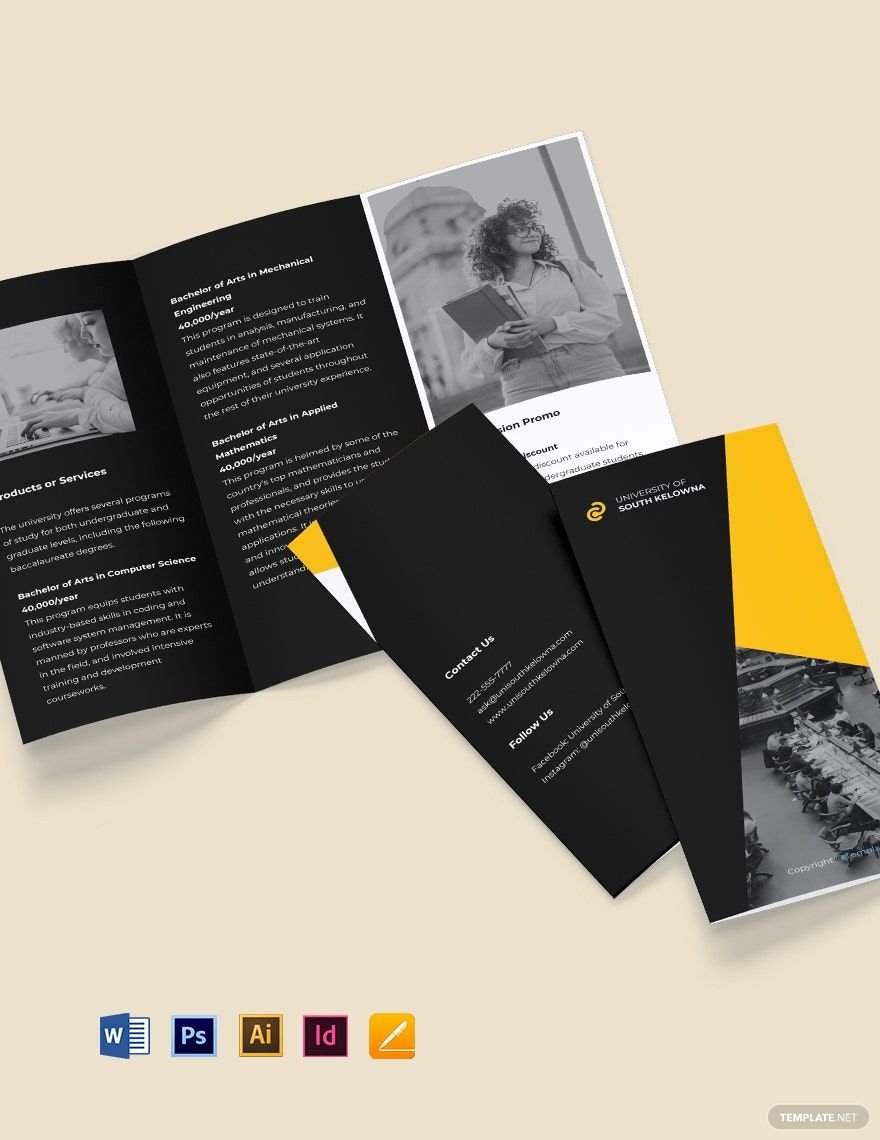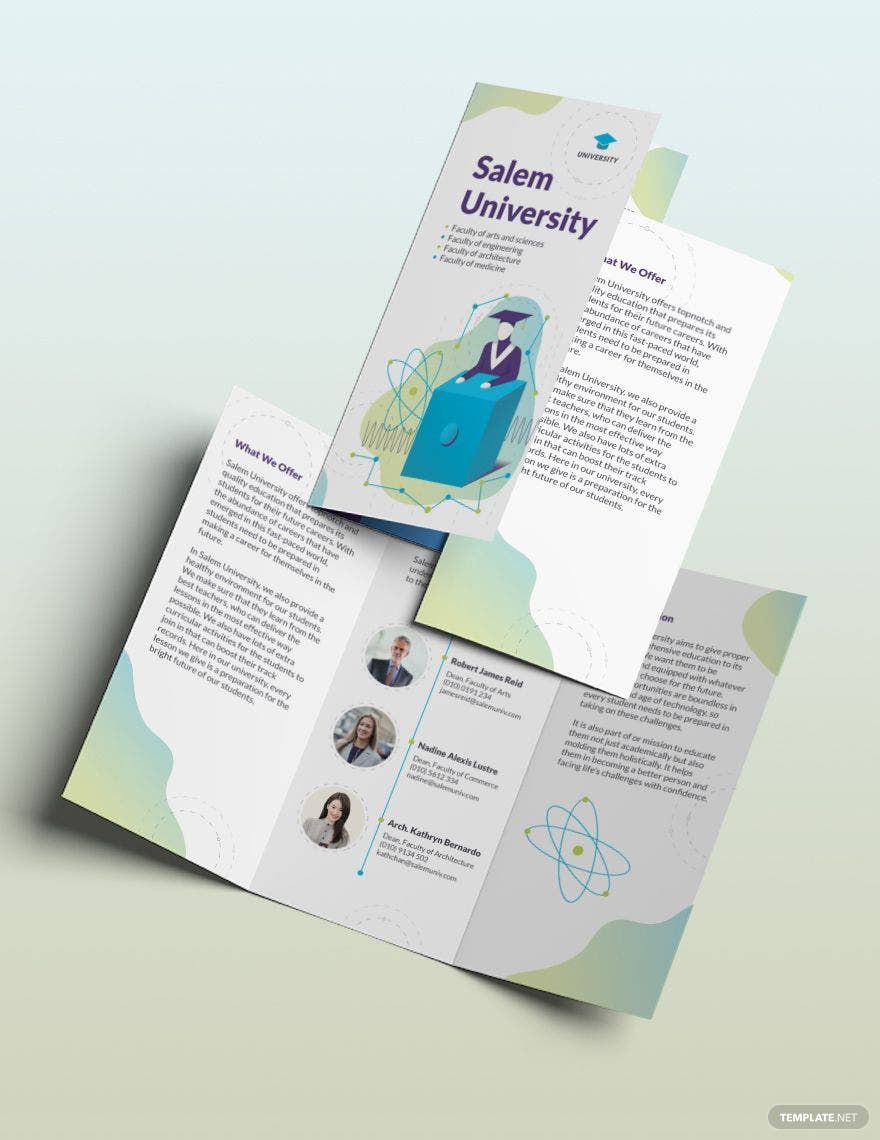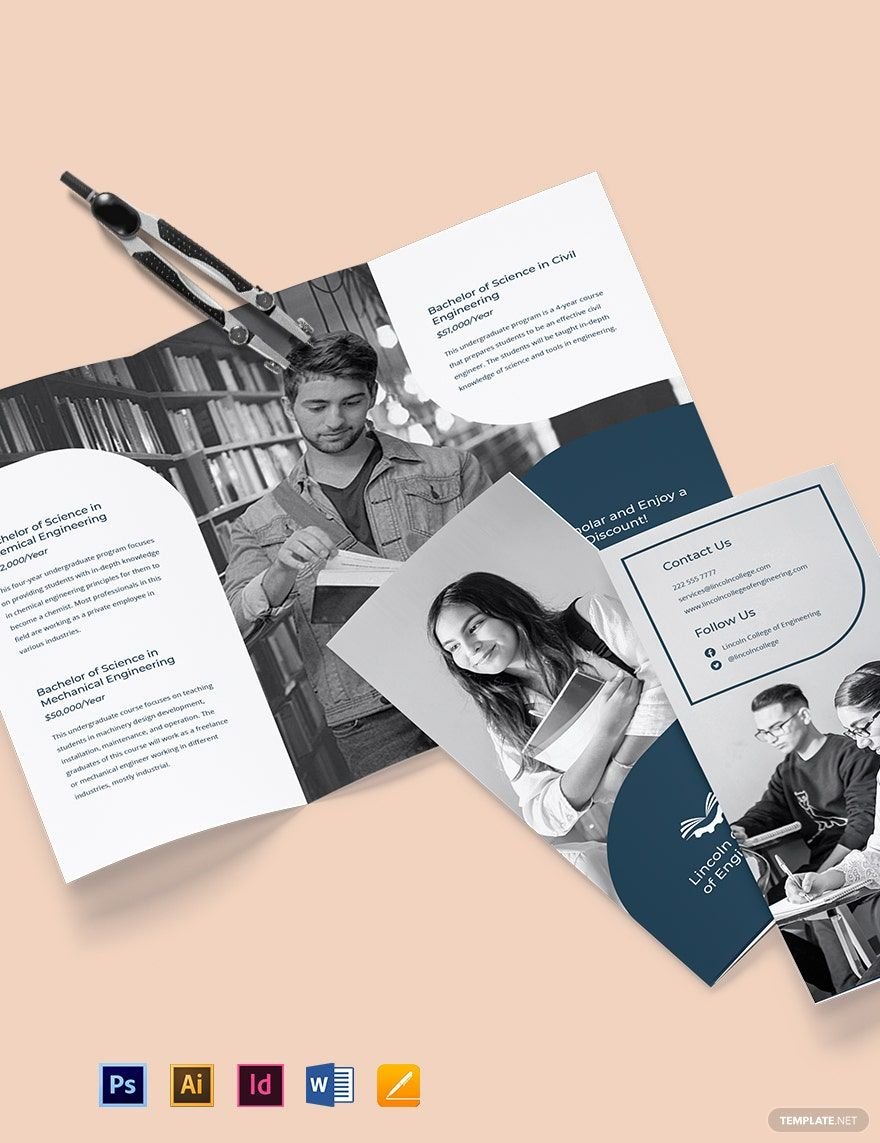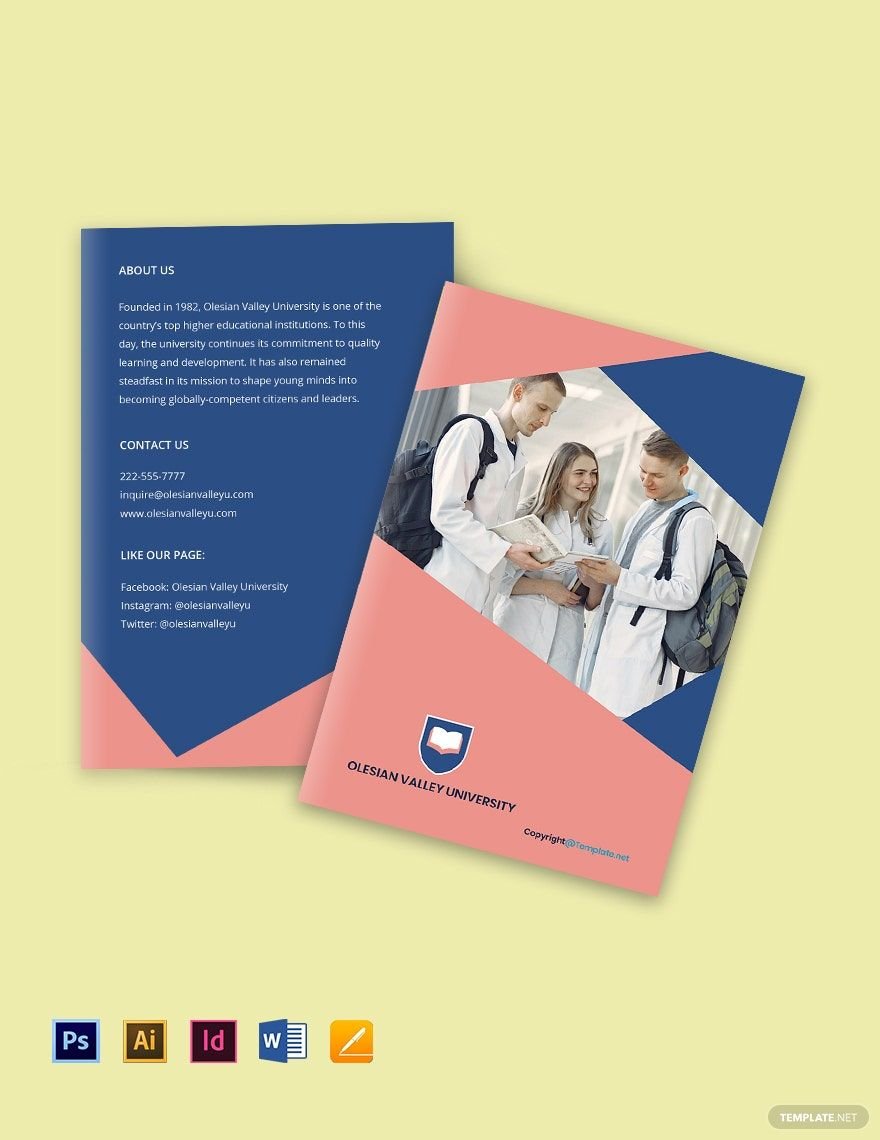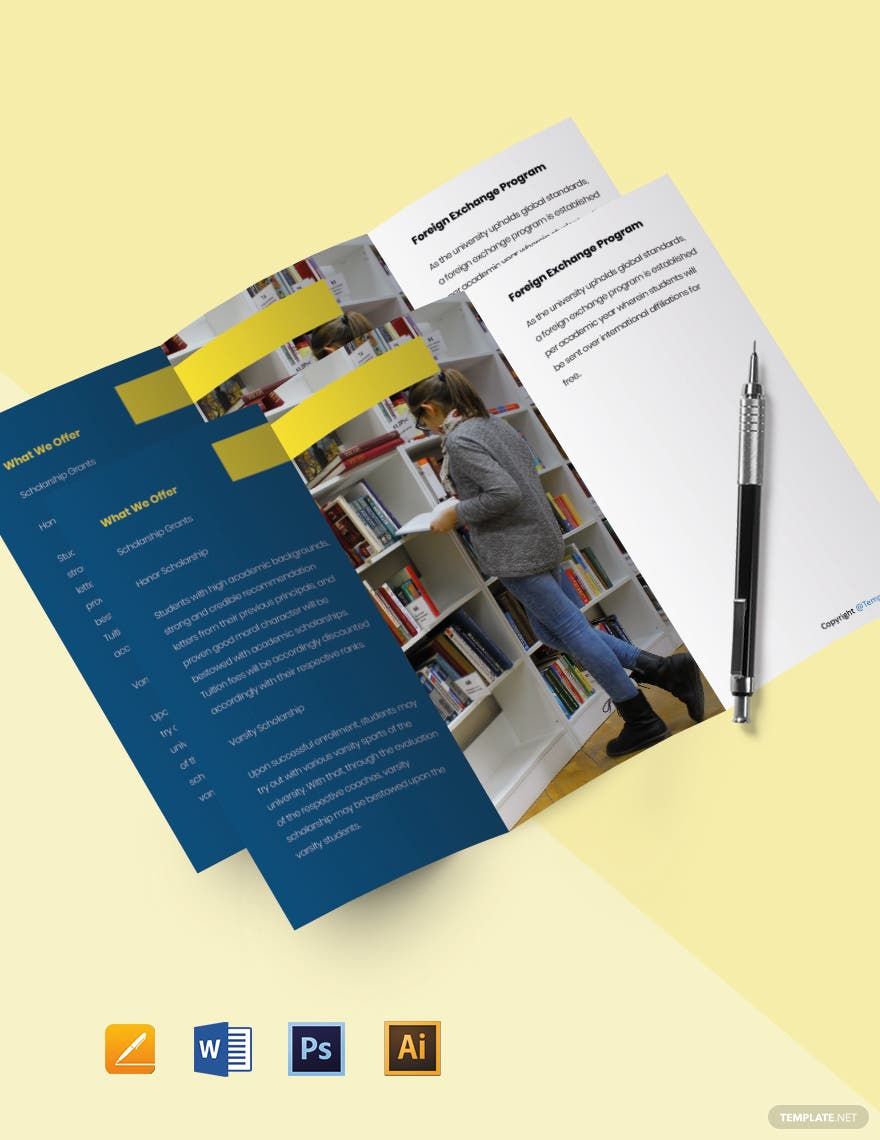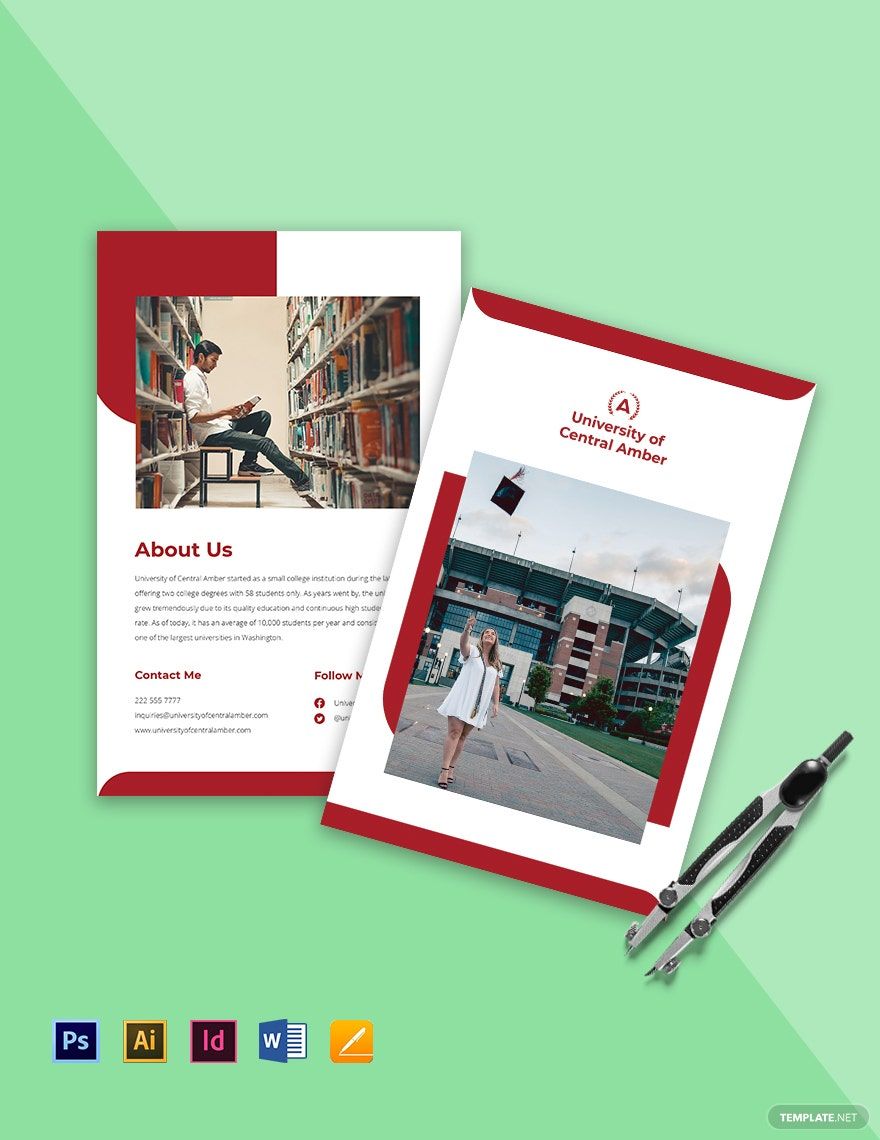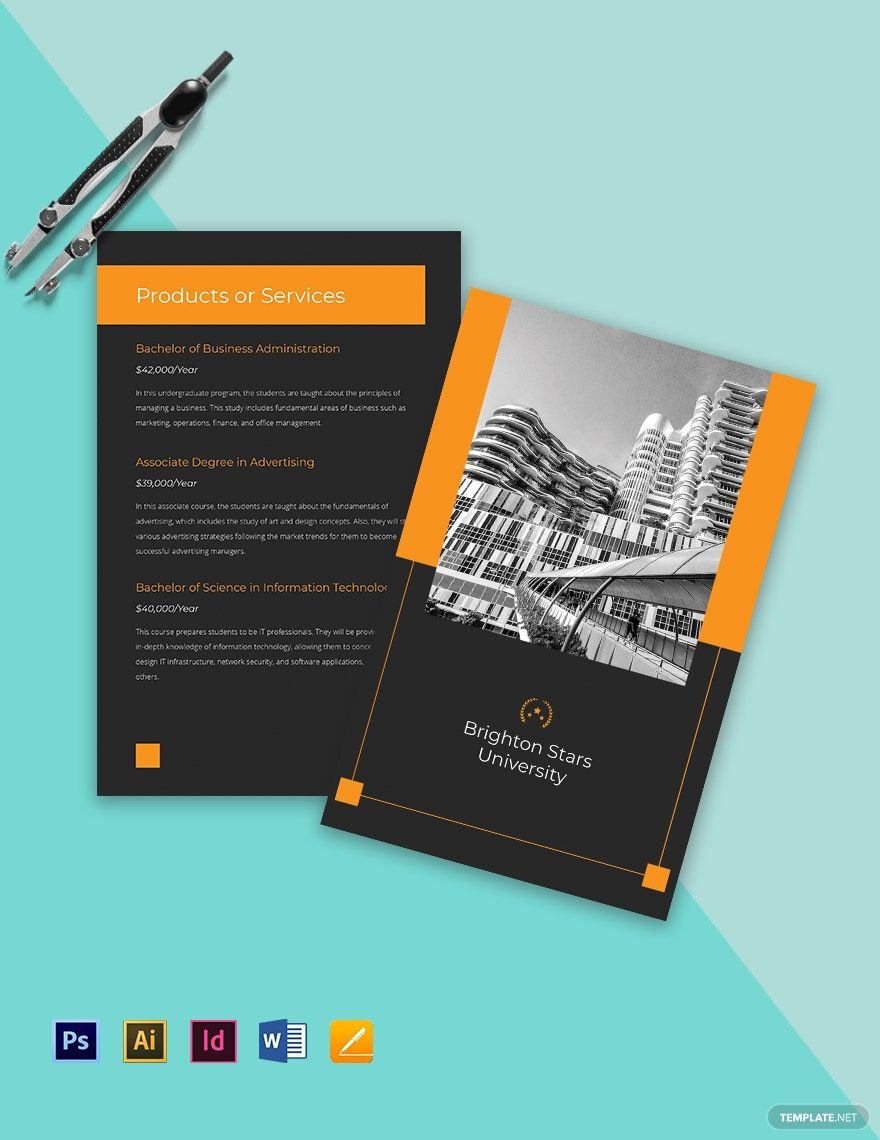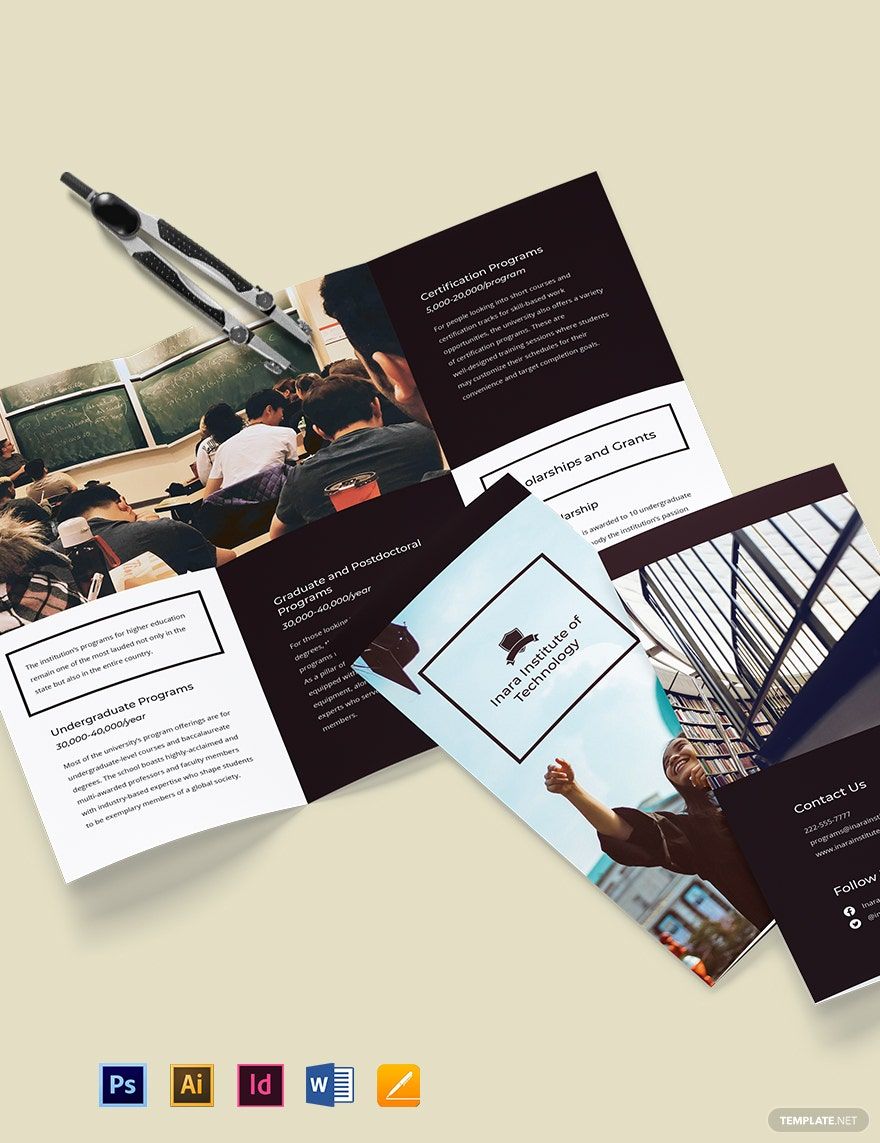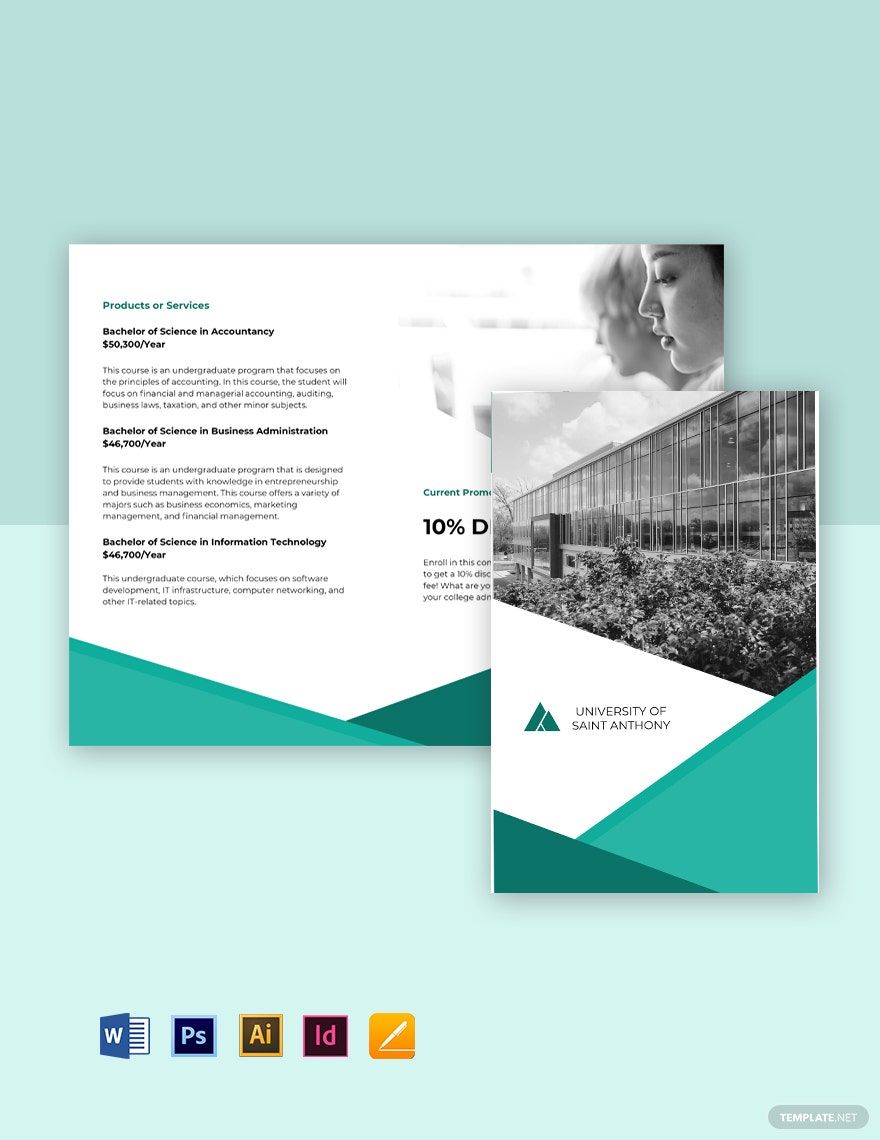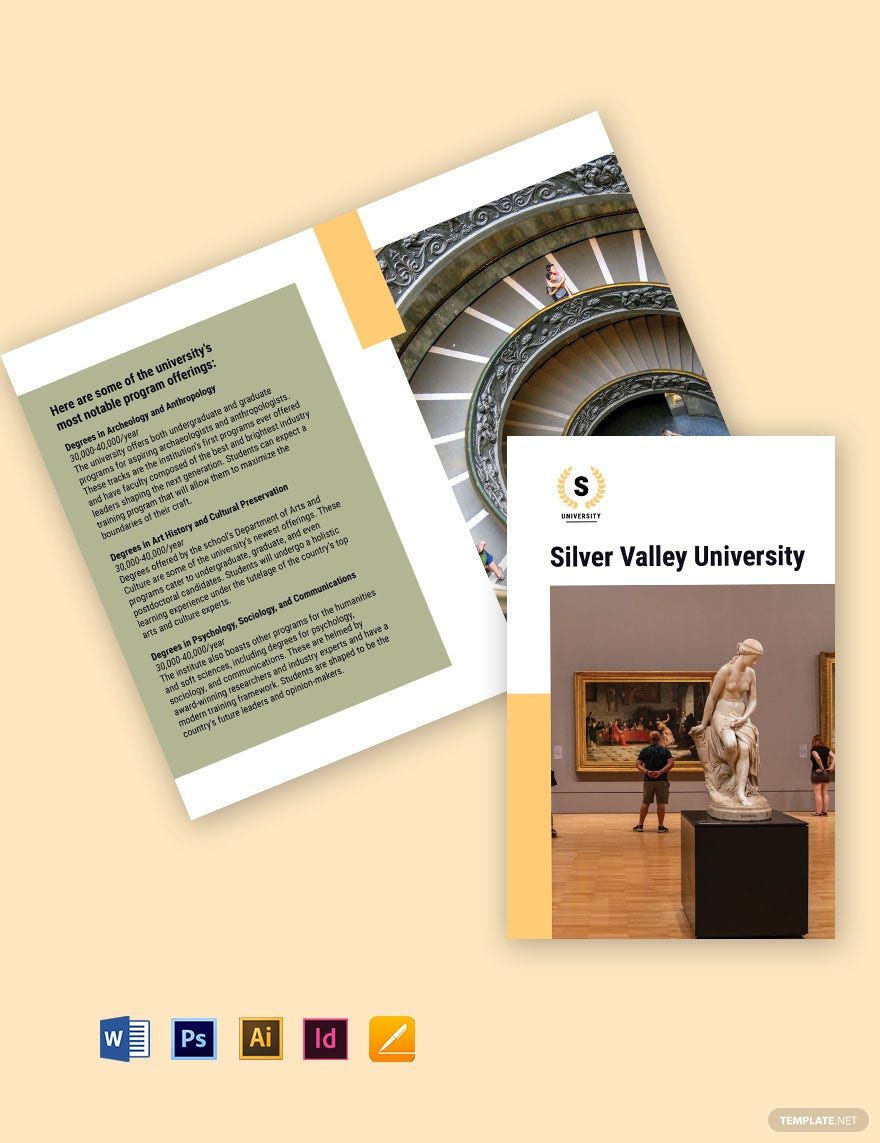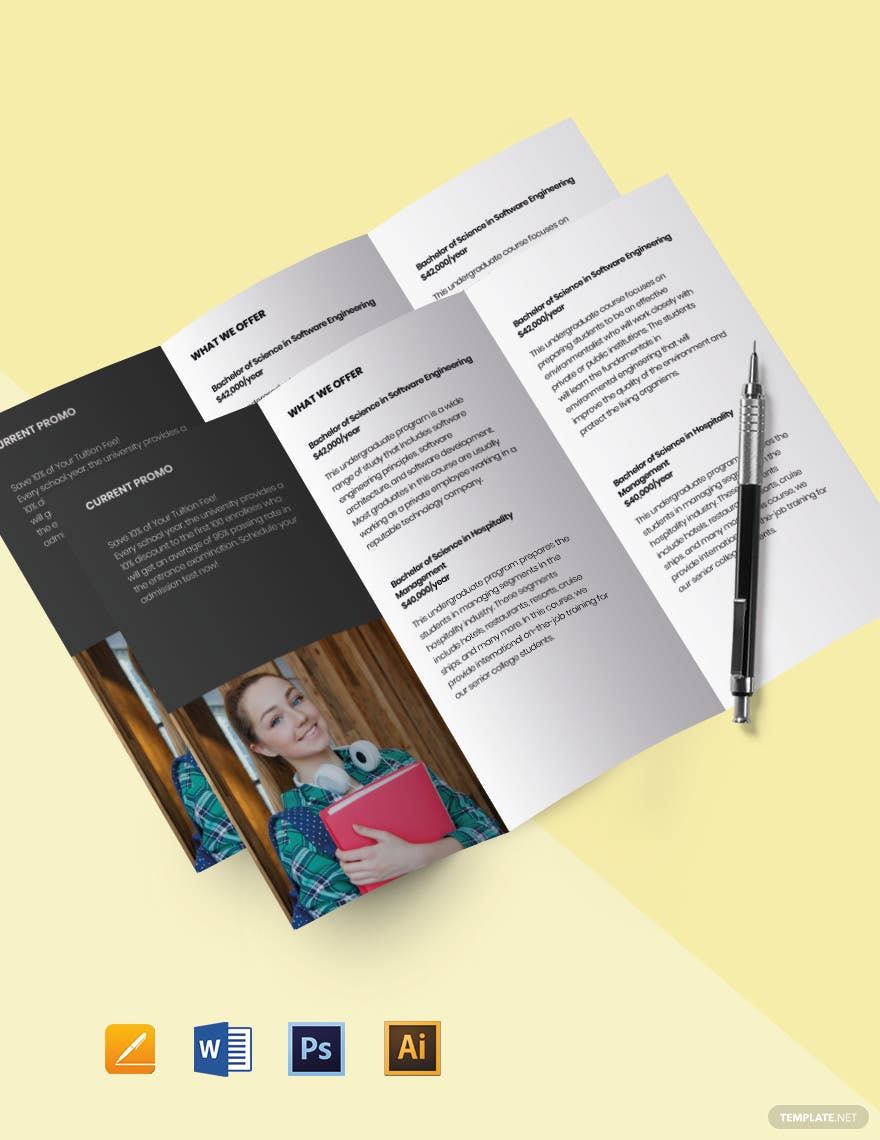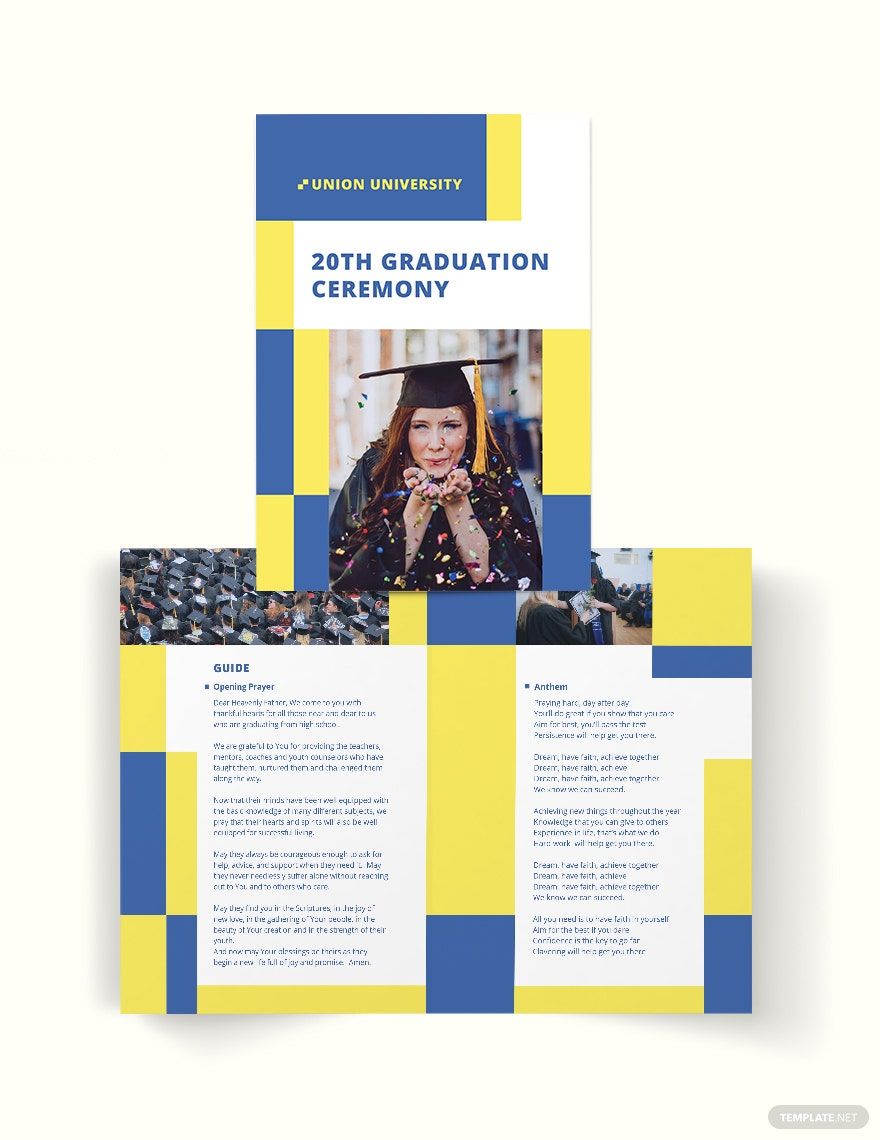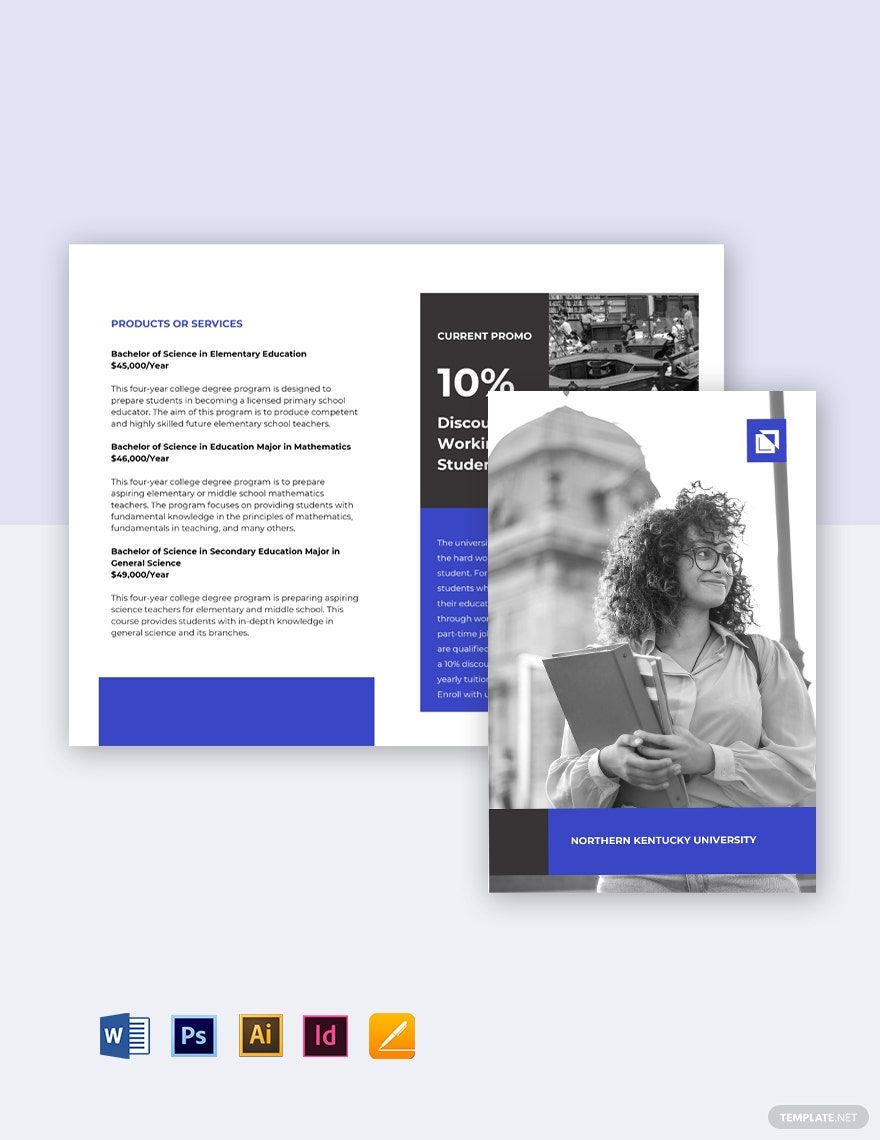Elevate Academic Promotions with {University Brochure Templates} in {Microsoft Word} by {Template.net}
Bring your campus campaigns and educational events to life with free pre-designed {University Brochure Templates} in {Microsoft Word} by {Template.net}. Perfect for administrators, educators, and student organizations, these templates empower you to craft professional-grade brochures effortlessly with no design skills needed. Whether you're aiming to showcase your university's unique programs or promote a campus-wide event, these templates are designed to make it easy. With a wide selection of beautiful pre-designed templates available, you can quickly create downloadable and printable files, ensuring your message reaches a wider audience through both digital and print distribution.
Explore more beautiful premium pre-designed templates in {Microsoft Word} that can elevate your brochure designs to new heights. With regularly updated collections, you'll always have fresh designs to choose from, ensuring your materials stay relevant. You can download or share these templates via link, print, email, or export for increased reach and impact. We encourage using both free and premium templates for maximum flexibility and creativity, ensuring your university's brochures are always top-notch and compelling.
